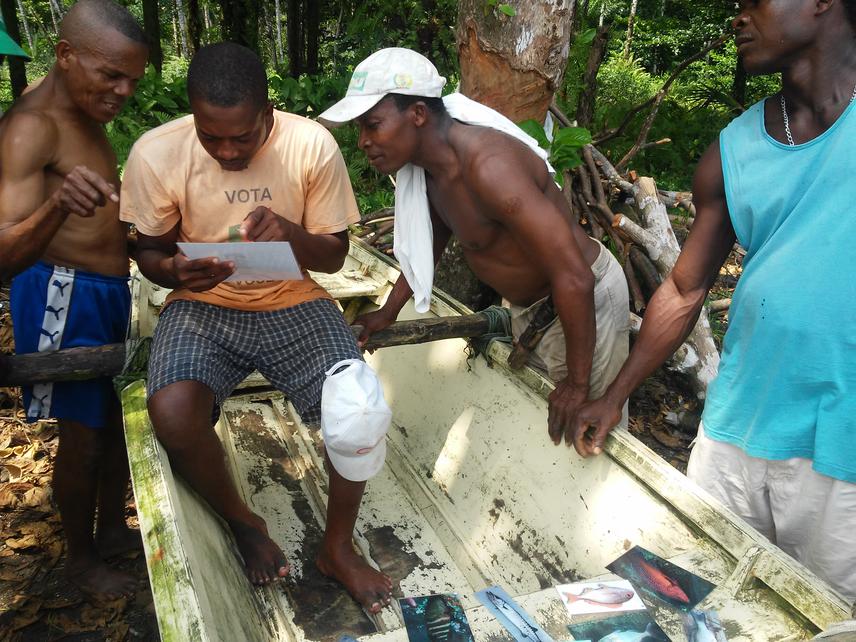Hugulay Albuquerque Maia
To increase knowledge of the marine ecosystems of this poorly known hotspot, helping to solve questions that are critical for the employment of conservation measures.

Angolares fishermen. © Hugulay Maia.
The Gulf of Guinea hosts some of the least known and most threatened tropical reefs in the world. During a scientific expedition to São Tomé Island ten years ago, the absence of large reef fishes was attributed to local-scale artisanal fishing. Now, reports on the use of destructive fishing arts suggest recent changes might be occurring to fish assemblages at this island. We will combine underwater samplings, local ecological knowledge and historical ecology in a multi-scale approach to reveal temporal trends in fish assemblages at São Tomé and Príncipe. By contributing to increase knowledge of this country’s reefs, we intend on drawing attention to the urgent need of establishing fishing restrictions and Marine Protected Areas. The knowledge gaps we intend on filling can be divided in three temporal scales:
Scale of years: recent accounts refer to diminishing fish abundances at São Tomé´s reefs due to indiscriminate dynamite fishing and small-mesh coastal trawling. If indeed destructive fishing arts have become as widespread as it seems, we expect to detect fish abundance and biomass declines compared to data provided by the previous expedition.
Scale of decades: as São Tomé´s population has tripled since 1960, it is expected that fishing intensity has followed a similar trajectory in this period, resulting in reduction of specific fish stocks. Assessing these trends will involve the use of local ecological knowledge accumulated by fishermen. Contrasting accounts of experienced and young fishermen shall reveal lost baselines of fishing catches at the country, as younger fishermen are expected to underreport fish sizes and catches in comparison to older and more experienced ones. Príncipe, a much less populated island than São Tomé, will be used as a control, less fished locality.
Scale of centuries: São Tomé Island has been populated and served as a slavery depository since the 16th century. As such, even the knowledge of old fishermen is based on an already altered system. Fortunately, it was a standard procedure that navigators and naturalists report natural features of visited islands. Historical ecology shall help us to piece together scattered impressions on São Tomé and Príncipe´s marine fauna on a concise narrative.